
Art and the Second Commandment
Sadly some Christians have a very low view of art, and in good measure this is due to a faulty understanding and application of the Second Commandment. The prohibition against graven images has been wrongly interpreted and as a result has led to much mischief over the centuries.
So what does the Commandment actually say? Let me offer it here as found in Exodus 20: 4-6 (the other version of it in Deuteronomy 5:8-10 is identical):
You shall not make for yourself an image in the form of anything in heaven above or on the earth beneath or in the waters below. You shall not bow down to them or worship them; for I, the Lord your God, am a jealous God, punishing the children for the sin of the parents to the third and fourth generation of those who hate me, but showing love to a thousand generations of those who love me and keep my commandments.
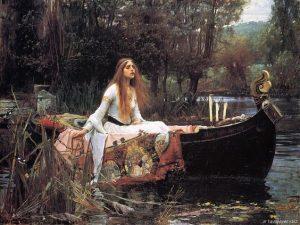 So what is being discussed here? This commandment is all about idolatry, not art. The key phrase is this: “You shall not bow down to them or worship them”. It forbids making of God any physical image from any creature: “of anything in heaven above or on the earth beneath or in the waters below”. God is the Creator and is distinct from the creature.
So what is being discussed here? This commandment is all about idolatry, not art. The key phrase is this: “You shall not bow down to them or worship them”. It forbids making of God any physical image from any creature: “of anything in heaven above or on the earth beneath or in the waters below”. God is the Creator and is distinct from the creature.
In all the surrounding cultures using living things of various kinds as images of the gods was commonplace. In the Ancient Near East physical images of the gods was allowed and sanctioned, but Israel was unique in barring all this. As Philip Graham Ryken comments:
The Israelites were not allowed to represent God in the form of anything in all creation. Remember that the Israelites had been living with the Egyptians, who worshiped many gods, nearly all of which they represented in the form of animals. The god Horus had the head of a falcon, the god Anubis had the head of a jackal, and so on. When it came to the Egyptians and their idols, any animal was fair game! But the God of Israel refused to be represented in the image of any of his creatures.
That various things living things and objects can be visually or artistically depicted is clear from the rest of Scripture. Indeed, entire chapters in the Old Testament are devoted to the artistic design and craftsmanship of the tabernacle and the temple: Exodus 25-31; 35-40; 1 Kings 6-7; 1 Chronicles 22:14-16; 29; 2 Chronicles 2-4; and Ezekiel 41.
R. Kent Hughes says this of the commandment:
It does not forbid the sculpturing and painting of images of living things, as some have supposed. If that were the case, then one has to account for God directing that cherubim be sculpted to preside over the Ark of the Covenant and also be woven into the veil of the Holy of Holies, as well as commanding embroidery of lilies and pomegranates. Likewise, Solomon’s Temple displayed lions, bulls, and cherubim (cf. 1 Kings 7:18-20). Rather, what is explicitly forbidden is the making of figures or objects representative of God as objects or aids to worship.
Or as Michael Horton has put it:
When God commanded the construction of the temple, He insisted that there be no physical representations of deity. There was much use of color and shapes and images from the natural world (fruit, trees, flowers, land, water), but there were no images of God Himself (1 Kings 6:16-18)….
God does not forbid images because He is opposed to art. In fact, Solomon’s temple was richly decorated with representations of the natural world. Rembrandt, shaped by the Reformation, celebrated everyday life and gave the natural world its own place, without requiring spiritual justification for his subjects. Nor were all depictions of Christ and the apostles forbidden. They simply were not to be used in worship or devotion.
In his important booklet, Art and the Bible, Francis Schaeffer mentions Leviticus 26:1 and goes on to say:
This passage makes clear that Scripture does not forbid the making of representational art but rather the worship of it. Only God is to be worshiped. Thus the commandment is not against making art but against worshipping anything other than God and specifically against worshipping art. To worship art is wrong, but to make art is not.
One major principle of interpreting Scripture is that Scripture does not contradict itself. This is why it is important to note that on Mount Sinai God simultaneously gave the Ten Commandments and commanded Moses to fashion a tabernacle in a way which would involve almost every form of representational art that men have ever known.
The dangers of idolatry
Can some people turn art into an idol? Can love of art become idolatrous? Yes of course to both questions. But that is true of all good things in a fallen world. We can turn loved ones, our jobs, our relationships, our families, even our churches into idols.


Every good thing in this life can become idolatrous if we are not careful. And Christians can just as easily do this: they can idolise their pastor or priest, or theology, or denomination, etc. The answer to such idolatry is not to reject and spurn every good thing God has given us, but to hold everything in right perspective, always putting God first.
Jesus even warned about loving your mother and father more than him. Does that mean parents are bad? No, it just means that the human heart has a tendency to create idols everywhere. And when the one true and living God is not at the centre of our worship, we will find something else to worship.
Indeed, we are all created to worship. As Al Mohler, discussing the first two Commandments, puts it: “To be created in the image of God is to be made a worshipping being.” He asks why fallen sinful beings are so idolatrous: “The reason is simple – we must worship, we will worship. Even as nature abhors a vacuum, so does the human soul. The human soul will find an object of worship, either on the shelf, on the altar, in the mirror, or in heaven. We are born idolaters.”
Thus we “are homo-idolater, the creature who would fashion our own god. This is the true perennial heresy.” So art, like everything else in life, can be a good thing, but if misused and abused it can become a very bad thing indeed. We can become idolatrous about art like we can become idolatrous about anything.
That good things can be perverted is no reason to get rid of all good things. It simply means we must all guard our hearts and minds much more carefully so that we do not drift into idolatrous worship of anything and everything but the one true God.
Banning art is not the answer. Dealing with our idolatrous heart is. As James Packer rightly states, “God’s real attack is on mental images, of which metal images are more truly the consequence than the cause.” Let me conclude with the wise words of Francis Schaeffer on this:
The arts and the sciences do have a place in the Christian life — they are not peripheral. For a Christian, redeemed by the work of Christ and living within the norms of Scripture and under the leadership of the Holy Spirit, the Lordship of Christ should include an interest in the arts. A Christian should use these arts to the glory of God, not just as tracts, mind you, but as things of beauty to the praise of God. An art work can be a doxology in itself.
[1274 words]








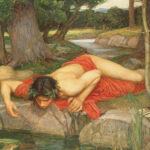
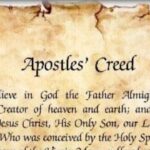

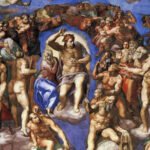


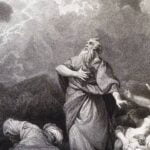
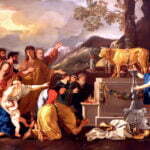

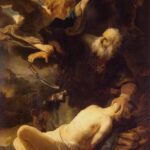


Let me be the first to comment here if I may. A short piece like this certainly does not answer all the questions on this topic. In fact it may well raise some more questions. For example: What about art in all its forms in churches and in worship? How should we think about things like crucifixes and religious art depicting God or Jesus etc? What about the various iconoclast movements throughout church history? What exactly is art and what is its place in the life of the believer? Plenty more related issues could be looked at here. But this piece was mainly on possible wrong understandings of the Second Commandment.
I have just been rereading “To Kill a Mockingbird” by Harper Lee and a comment by one of the characters seems pertinent here. “Sometimes the Bible in the hand of one man is worse than a whiskey bottle in the hand of…There are just some kind of men who – who’re so busy worrying about the next world they’ve never learned to live in this one.” Mankind (sorry, personkind!!) seems to lurch from one side of the pendulum to the other in imbalance.
Thank you for another thoughtful article.
Thanks for that Naomi.
Thanks for this post. It raises an issue which has long occupied my mind, i.e. the matter of true worship as opposed to false. I think here of Deut 12:30-31 where Moses warns against using the methods of pagan idolatry as means to worship the true God. We see precisely this happening when Jeroboam I set up calf idols to represent Yahweh, the God who brought you out of Egypt. Jeroboam was not reverting to naked paganism, but merely doing things “his way” to maintain the political separation from Judah (1 Kings 12:26-30). What Jeroboam established was not raw paganism, but a Mosaic heresy, hence it became a sin, and one denounced by the prophets of both Judah and Israel.
Now, the point I am coming to is this: we cannot ape the world when it comes to the worship of God. Bear in mind that the Reformation laid great emphasis on true worship, and rejected the pompous display and ritual of Catholic worship, something which traced back to the paganisation of the church in the Constantine era. They restored the simplicity of the upper room, but with reverence and holy fear (Heb 12:28). From the Second Commandment they enunciated the “Regulative principle”, that nothing is to admitted into the worship of God which lacks the warrant of Holy Scripture.
However, what do find passes for worship in much of the modern church? In all too many it is more a theatre than a sanctuary, what with strobe lights, blacked out windows (if indeed there are any at all), performers gyrating on a stage, and audiences singing and clapping endlessly and repetitively with banal lyrics having little theological content. In short, worship has become performance and entertainment to please and tittilate men rather than reverent and humble adoration of an all-sovereign God. The church has indeed aped the pagans in the way they worship their celebrity idols, and adopted the music of the rock concert and the disco. Meanwhile, the church’s rich heritage of worship in music, hymnody, prayer, devotion has been thrown out as so much worthless tradition.
I know this will meet with disagreement, even anger, but I believe it passionately, and is part of the reason I wrote my book, “Through the Christian Year with Charles Wesley”.
Humbly submitted
Murray R. Adamthwaite
Thanks Murray. Yes I have written often about my concerns over so much of contemporary worship.
Traditional Islam is iconoclast when it comes to art, even eschewing depictions of Muhammad, or showing him with a veiled face. The result has been the development of religious calligraphy as a sophisticated Islamic art form and the extensive use of plant and geometric motifs in the decoration of Muslim architecture.
In 1st-Century Judaea and Galilee, imperial Roman coinage was regarded by Jews as idolatrous because it depicted deified emperors and the city of Rome as a goddess. The eagles on Roman military standards were worshipped by soldiers and major disturbance occurred when Roman authorities attempted to introduce these idolatrous objects into Jerusalem. Caligula’s plan (fortunately forestalled) to set up an image of himself in the Jerusalem Temple was one of the contributing factors in the build-up to outbreak of the Jewish War in AD 66.
Dear Bill,
Thank you for another balanced article. It has always been my understanding that the great cathedrals of Europe built during the medieval period of history had the ordinary worshipper in mind who were for the most part illiterate even if they had had access to Bibles which they didn’t. Bibles were scarce because they were hand copied.Therefore painted murals of Bible stories and stained glass windows were necessary aids to give the illiterate a better understanding of the Bible. It was simple common sense based on reason!
As for the Catholic Church’s long use of images. Paintings and statues are used in Churches and homes as REMINDERS ONLY of who or what they are meant to portray. Under no circumstances are they meant to be prayed to. You will excuse me if I appear rude but there is a certain so called Christian ‘sect’ that actually goes around falsely claiming that Catholics use these images to pray to. Catholics pray ONLY to God and Jesus Christ as His Son. Everyone else [the saints Mother Mary etc] gets asked for their intercession.
If people think they don’t need these aids to prayer that is alright as well.
Would anyone, I wonder, question why a photograph or image of a loved one displayed on a cabinet or table was there? I think not! In the same way, the images of Jesus, His Mother and the Saints etc who have been described as best they can by the Visionaries approved by the Church after rigorous testing are used. The Divine Mercy pictures would be only one recent example as a result of the Polish visionary SR Faustina. She emphasised no picture painted by human hand could ever match the beauty of the Merciful Jesus whom she saw in a vision. She was made a saint By the late Pope John Paul 2.
An excellent study is a paperback by Geoffrey Bingham “The Way and Wonder of Worship”. I’m reading it now. So encouraging in the face of the rampant idolatry Australia is having pushed upon us now by the homo-idolaters. The imago dei is the image of the True Artist. How beautiful are His works!
Thanks for this great article Bill. I think of two paintings which have preached the Gospel. The first was Rembrandt’s THE RAISING OF THE CROSS where he places himself amongst those helping to pull up the cross to upright position whilst looking out at the audience. He was saying it was all of our sins that put Christ there. The other was in the DUSSELDORF art gallery – a crucifixion scene again. It had a profound effect upon a young nobleman to the point that he was converted. That was Zinzendorf who greatly assisted the Moravians who in turned influenced John Wesley. At the bottom of the picture of the Crucifixion the artist had written ALL THIS I DID FOR THEE WHAT HAST THOU DONE FOR ME?
Thanks for that Wayne. And yes I discuss the second painting (and include a picture of it) in this article:
https://billmuehlenberg.com/2010/04/30/l%E2%80%99oreal-christianity/
What do you make of Westminster Larger Catechism Q109? This is used often by Reformed folk as a good guide but I’m not fully convinced, though I subscribe to the Westminster Standards.
Q. 109. What sins are forbidden in the second commandment?
A. The sins forbidden in the second commandment are, all devising, counseling, commanding, using, and any wise approving, any religious worship not instituted by God himself; the making any representation of God, of all or of any of the three persons, either inwardly in our mind, or outwardly in any kind of image or likeness of any creature whatsoever; all worshiping of it, or God in it or by it; the making of any representation of feigned deities, and all worship of them, or service belonging to them; all superstitious devices, corrupting the worship of God, adding to it, or taking from it, whether invented and taken up of ourselves, or received by tradition from others, though under the title of antiquity, custom, devotion, good intent, or any other pretense whatsoever; simony; sacrilege; all neglect, contempt, hindering, and opposing the worship and ordinances which God hath appointed.
Thanks Brian. It is close to the Commandment: do not make anything and religiously worship it. Art is another matter, and it does not involve, per se, any religious worship.
Thank you for the reply. What I’m specifically interested in is your reaction to where it says you not only cannot create art that involves any member of the Trinity, but to even conjure it in your mind is sinful.
So this would include all paintings with Jesus or God, all sculpture, all cinema, etc. That indicates something a fair piece beyond worship it seems to me.
Thanks Brian. I do not claim to be an expert on the various Westminster documents. I am aware of some of the more conservative contemporary Reformed folks who do not like any picture of any member of the godhead, and I am aware of some of the iconoclasm found in Reformed history. Again the context of that prohibition in Q109 seems to have to do with the worship of such images, But those who are experts in the Reformed faith in general and the WLC in particular may well be better placed than I to answer your specific questions on this.
But the short answer as to how I might respond to it: if it IS a prohibition of all religious art involving anything with God as a subject, I may have to disagree with it. Again, the key issue being if such art leads you to worship it, or to just appreciate it and worship him.